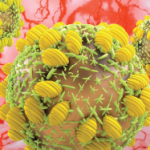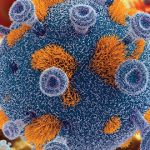The role of liver biopsy in patients with chronic HCV infection is a matter of continuing debate among hepatologists and gastroenterologists.7 Liver biopsy provides valuable information that could significantly influence therapeutic decisions and determine the prognosis of chronically infected patients. Currently available guidelines propose antiviral treatment for HCV patients with abnormal alanine transaminase (ALT) values and histological findings showing chronic hepatitis and significant fibrosis (Ishak score greater than 3), in the absence of liver decompensation (ascites, hepatic encephalopathy, prolonged INR, etc.).7
Liver biopsy is particularly useful in patients with genotype-1 infection; for patients with genotypes -2 and -3 who usually demonstrate a good response to antiviral therapy (74% to 80%), antiviral treatment is recommended regardless of the liver biopsy results. Similarly, patients with persistently normal ALT values could benefit from antiviral therapy because 20% of them could have significant fibrosis in liver biopsy.7
Liver biopsy could also have a prognostic value for patients who are not considered candidates for immediate antiviral treatment (normal ALT values, low fibrosis score). In these cases, a repeat liver biopsy in four to five years could identify those that show progression of their liver disease that needs to be treated.
For patients with RA and chronic HCV infection, there is additional information that could be gained by a liver biopsy. For patients who are scheduled for DMARD therapy or for those already receiving DMARDs (such as methotrexate or leflunomide), therapeutic decisions could be greatly influenced by the liver biopsy results. In the case of significant liver fibrosis, starting or continuing therapy with potentially hepatotoxic DMARDs is not advisable. In such cases and in the absence of decompensated liver disease (ascites, encephalopathy, coagulopathy, or increased bilirubin), biologic therapy given as monotherapy should be seriously considered. If the liver biopsy shows minimal inflammation and little or no fibrosis, we believe that initiation or continuation of DMARD therapy, with or without the addition of biologics, under close monitoring of liver function and potentially repeating biopsy in a few years, is the preferred approach.
Can Interferon-Based Therapy for HCV Exacerbate RA and How Can I Manage the Risk?
There are no prospectively collected data on the incidence of arthritis exacerbation in patients with RA and HCV, receiving treatment with IFN-a–based regimens. It has been estimated that between 25% and 35% of patients with chronic hepatitis C receiving IFN-a develop arthralgias during treatment,19 but true inflammatory arthritis appearing either de novo or in patients with pre-existing articular disease is relatively rare. In an older study, Okanue et al found only two cases of RA in 677 patients with chronic hepatitis C treated with high doses of standard IFN-a.20 Nevertheless, well-documented cases of inflammatory arthritis developing in this setting have been reported in the literature.21-24

